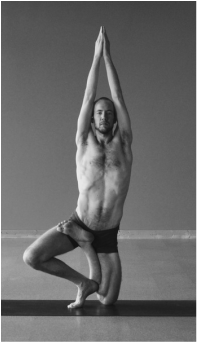|
This continues the discussion of the elements of yoga in the light of yoga's goal: to see things as they truly are. For more discussion of other elements, read Part 1: Introduction, Part 2: Physical Postures/Asana, and Part 3: Energy Control/Pranayama.
With Concentration and Meditation, we begin to enter the higher realms of yoga practice. Physical Postures (Asanas) use the body to access the mind, and Energy Control (Pranayama) uses the breath. Concentration and Meditation no longer use physical tools to access the mind. They deal with it directly. Concentration is the first limb to deal with the mind alone. No longer are we accessing the mind though external means like the muscles or breath. Concentration is learning how to focus the mind all by itself. Can we keep the mind from wandering? Can we maintain our attention on a single point? Concentration "is the beginning of meditation; meditation is the culmination of concentration. They are more or less inseparable." (1) As we improve our ability to focus the mind without wavering, the concept of Meditation comes closer. In Meditation we release our grip on the mind and it stays still, like a bird you hold in your hands. First you must train it to stay put. After you have trained it, you may open your hands and it will not fly away. "Once it's tamed, it will just listen to you. You will be able to say, 'Okay, sit there quietly.' And it will. At that point you are meditating. Until then you are training yourself to meditate." (1) Such is the mind. If the mind wanders, we need to work on Concentration, training the mind to be still and unmoving. There are many forms of Concentration - objects and ideas upon which we can focus the mind. I won't deal with those in any detail, only mention a few of them. Common types of Concentration (some call them Meditations) are 1) Single Point Concentration, where the mind is focused on one thing like a candle, a picture or the sound of the breath, 2) Compassion Concentration, where the mind is focused on another person and the nurturing of loving thoughts, and 3) No Point, which is the release of focus of the mind, allowing it to rest quietly. In the tradition of yoga, 'No Point' is what is meant by the term Meditation. Each type of Concentration and Meditation has its own value to the mind and self. Practice each type until the mind will sit still without needing to be compelled. These practices bring clarity, ease, intuition and happiness. When the mind comes under control, we cease to be controlled by our reactions. The senses no longer create automatic responses in the mind and body. We begin to see things as they are instead of as how we react to them. This is the purification of the senses. The Purpose of Yoga, Part 1: Introduction The Purpose of Yoga, Part 2: Physical Postures/Asana The Purpose of Yoga, Part 3: Energy Control/Pranayama *1. The Yoga Sutras of Patanjali, translation and commentary by Sri Swami Satchidananda
0 Comments
Leave a Reply. |
This journal honors my ongoing experience with the practice, study and teaching of yoga.
My FavoritesPopular Posts1) Sridaiva Yoga: Good Intention But Imbalanced
2) Understanding Chair Posture 2) Why I Don't Use Sanskrit or Say Namaste 3) The Meaningless Drudgery of Physical Yoga 5) Beyond Bikram: Why This Is a Great Time For Ghosh Yoga Categories
All
Archives
November 2017
|


 RSS Feed
RSS Feed